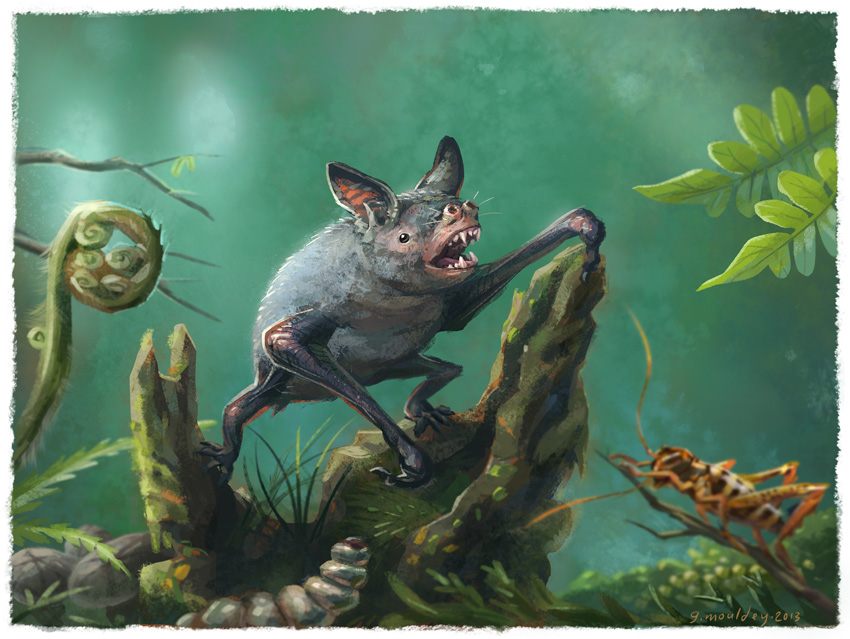Found: A Giant Extinct Burrowing Bat
It used to scurry about on all fours on New Zealand’s forest floor.

Bats are famous for a few things. They go out at night, they sleep upside down, and they are the symbol of Bruce Wayne’s powerful alter-ego. But some of them, such as the appropriately named burrowing bat, can display a relatively out-of-character behavior: walking on all fours.
An international team of scientists recovered the fossilized remains of an extinct giant burrowing bat previously unknown to science. Their work is published today in Scientific Reports. Vulcanops jennyworthyae, named after one of the researchers who found the fossil, was discovered in sediments formed 16 to 19 million years ago, near the town of St. Bathans, in Central Otago, New Zealand.
“Burrowing bats are more closely related to bats living in South America than to others in the southwest Pacific,” said the study’s lead author Professor Sue Hand, Director of the Palaeontology, Geobiology, and Earth Archives Research Centre (PANGEA) at the University of New South Wales, Sydney, in a press release.
That’s probably because 50 million years ago, when global temperatures were up to 54°F higher than today, Australasia, South America, and a frost-free Antartica were all joined together in the supercontinent of Gondwana. When these lands eventually drifted apart, so did their burrowing bats.
Modern-day Australasian burrowing bats enjoy a wide selection of foods, including insects, fruits, and flowers. But their giant ancestors, which were three times the size of the average bat today, could count on specialized teeth that allowed him to devour a richer variety of plants and even small vertebrates, a diet that is now only followed by its South American cousins.
Vulcanops is the first new bat genus to be added to New Zealand’s fauna in more than a century. It probably went extinct after the early Miocene (a geologic epoch that started about 23 million years ago and ended about 5.33 million years ago), like other extinct species found in the same location. Scientists believe that many of these creatures, from terrestrial turtles to “swimming flamingos” known as palaelodids, were warm-adapted species that did not survive after global climate change brought colder and drier conditions to the region.
“This strange fossil bat is very different from the bats living in New Zealand today, and shows that we are missing a huge amount of their evolutionary history, ” said Dr. Robin Beck, a lecturer in biology at the University of Salford in the U.K. , in a release. “I think we can expect a lot more surprises from this fossil site in future.”
















Follow us on Twitter to get the latest on the world's hidden wonders.
Like us on Facebook to get the latest on the world's hidden wonders.
Follow us on Twitter Like us on Facebook